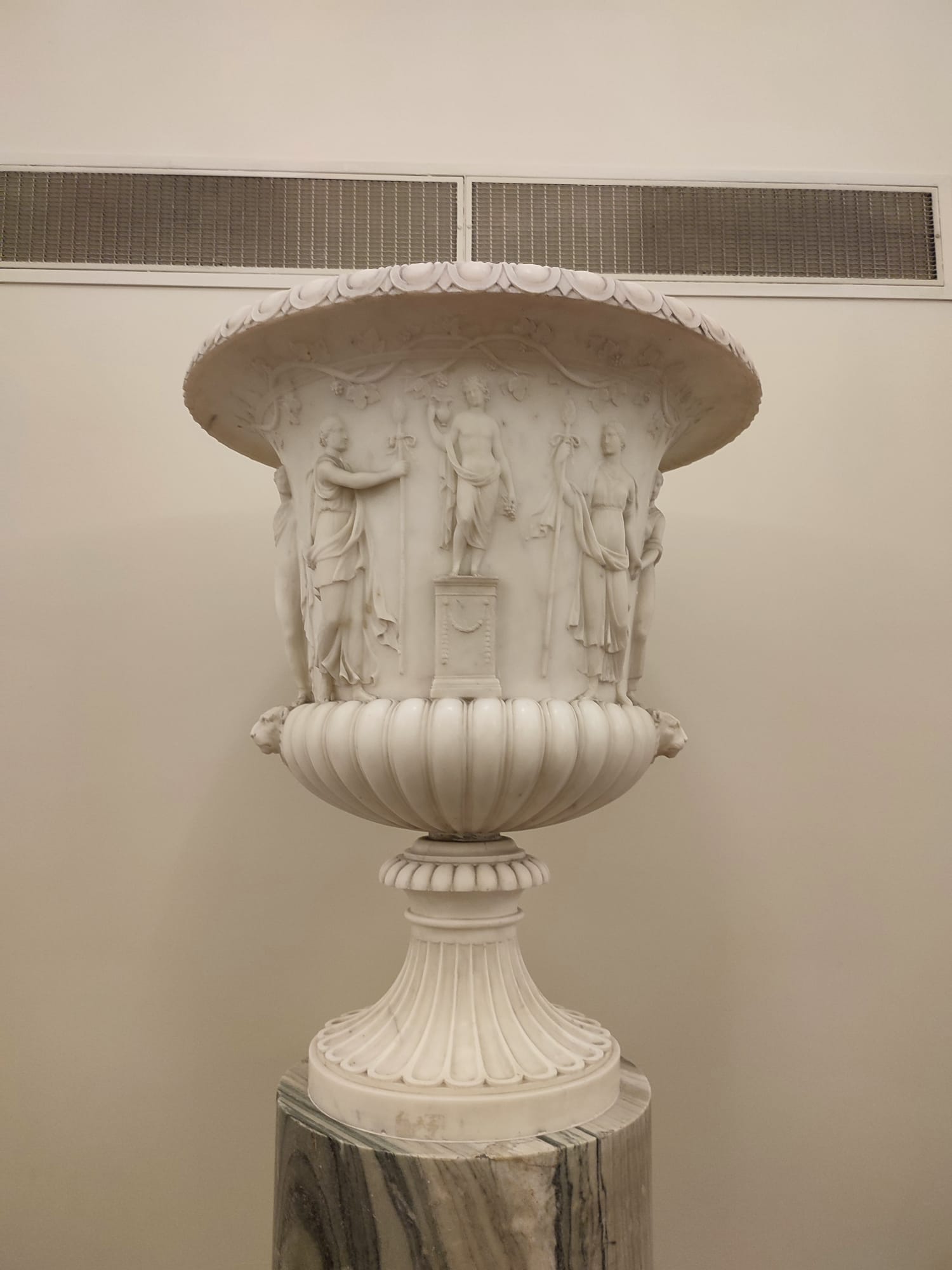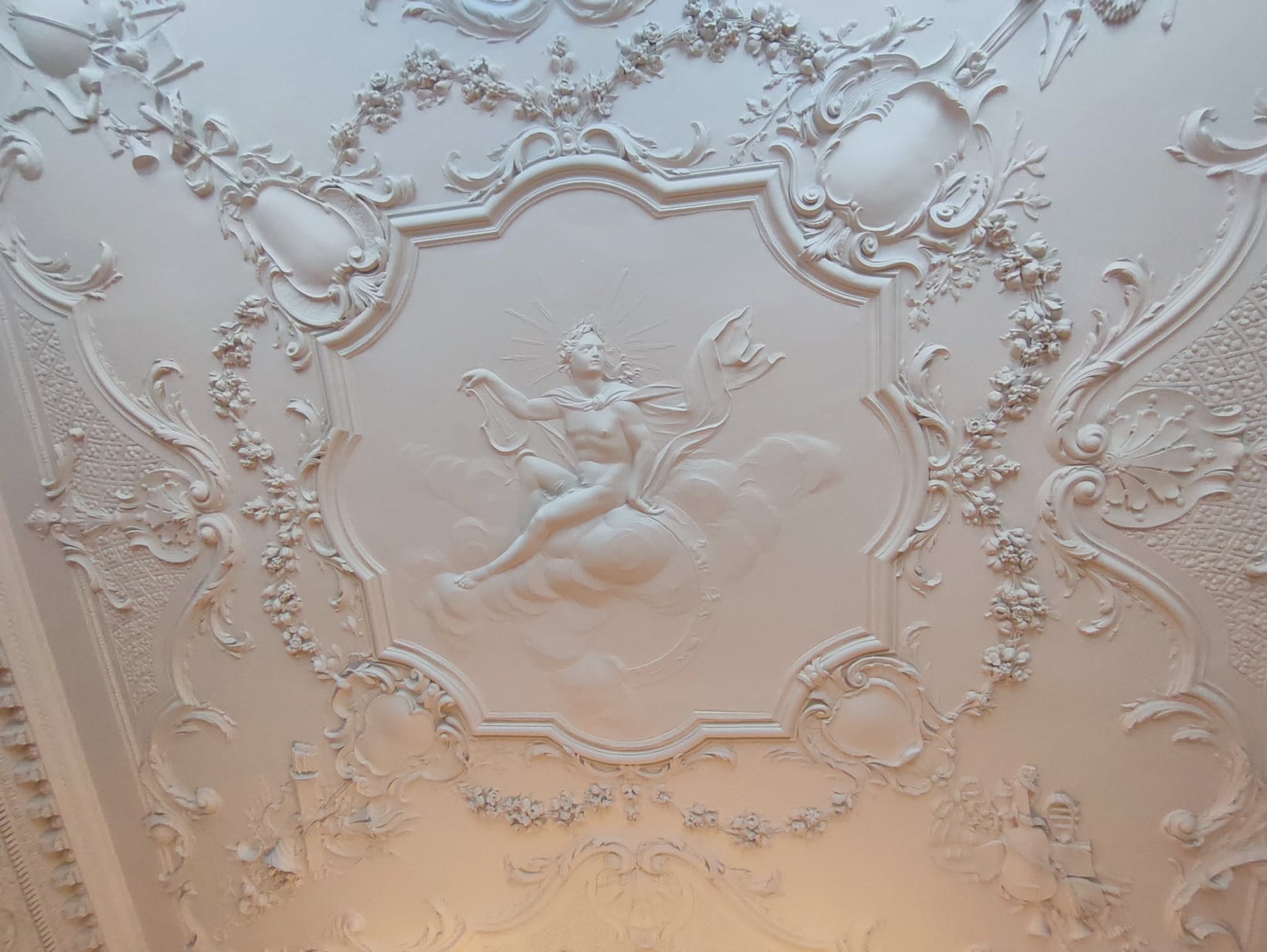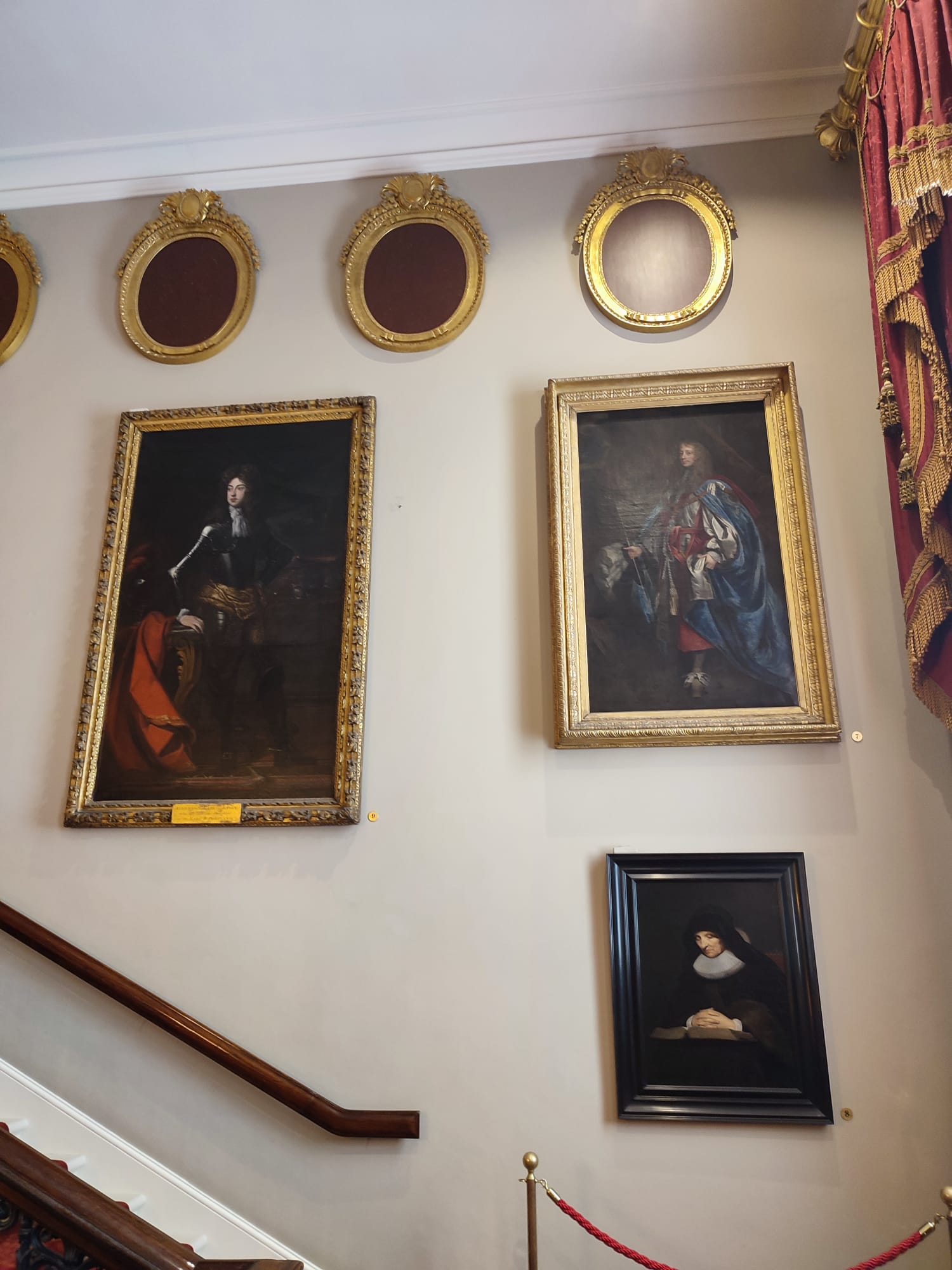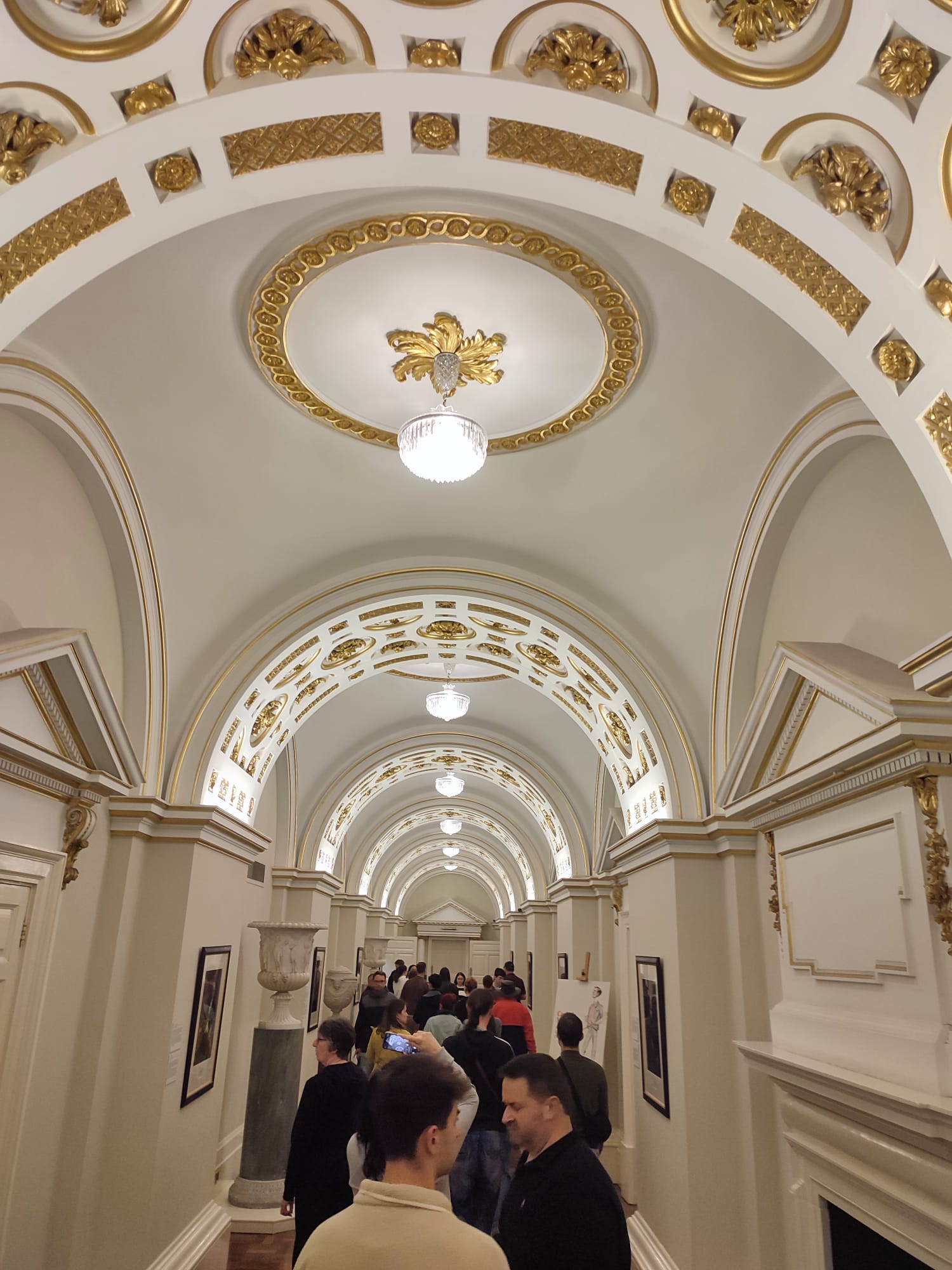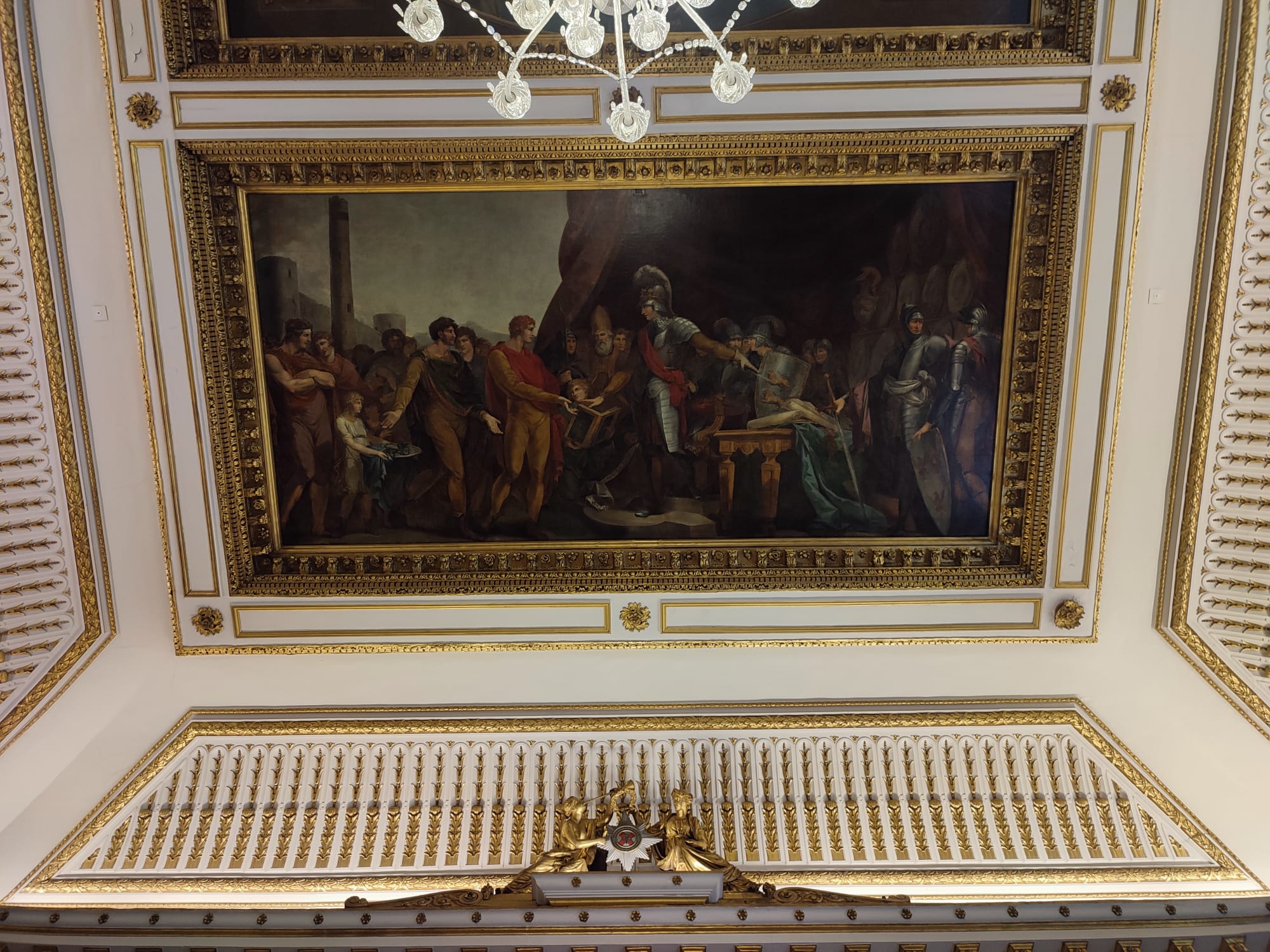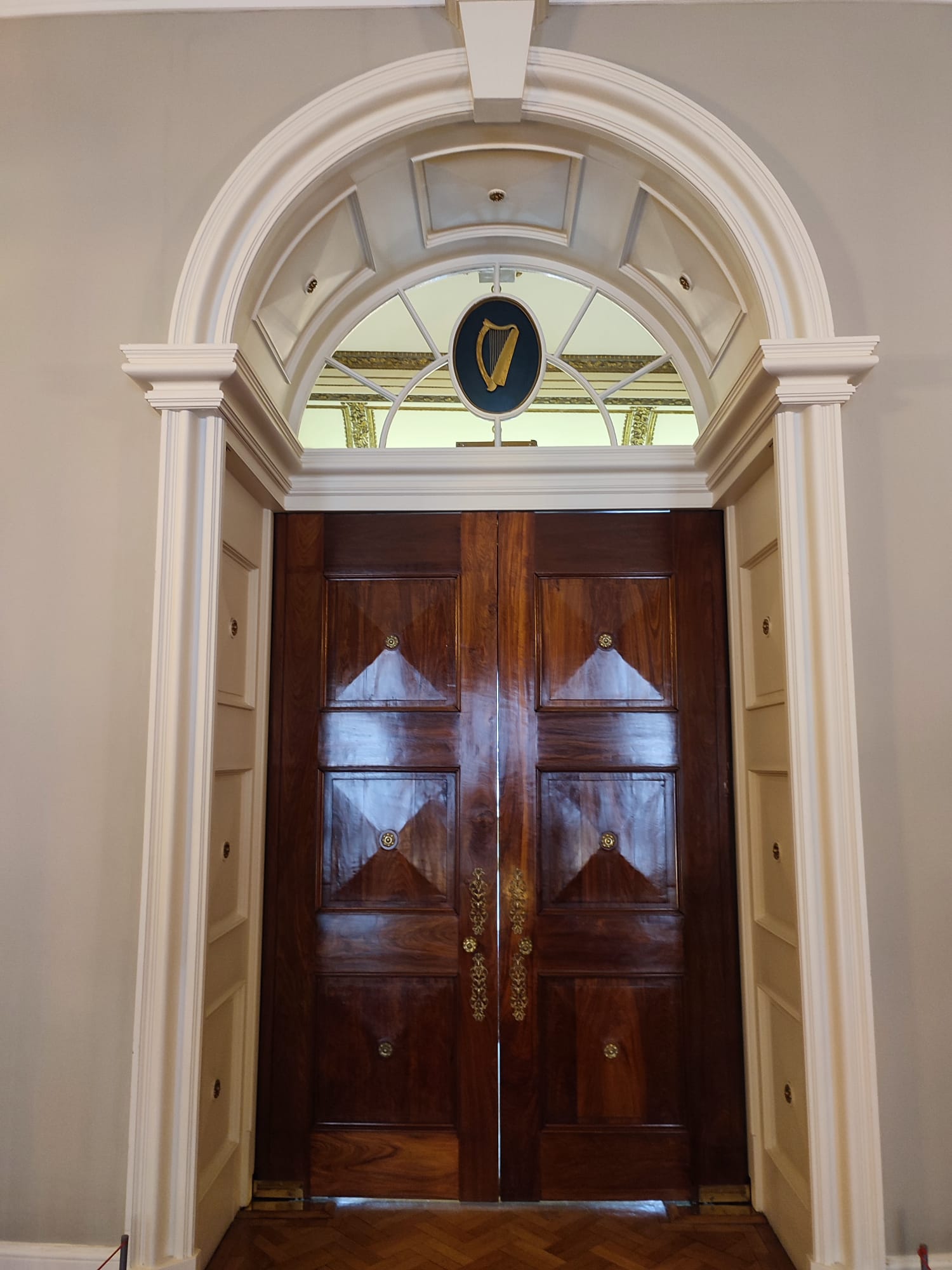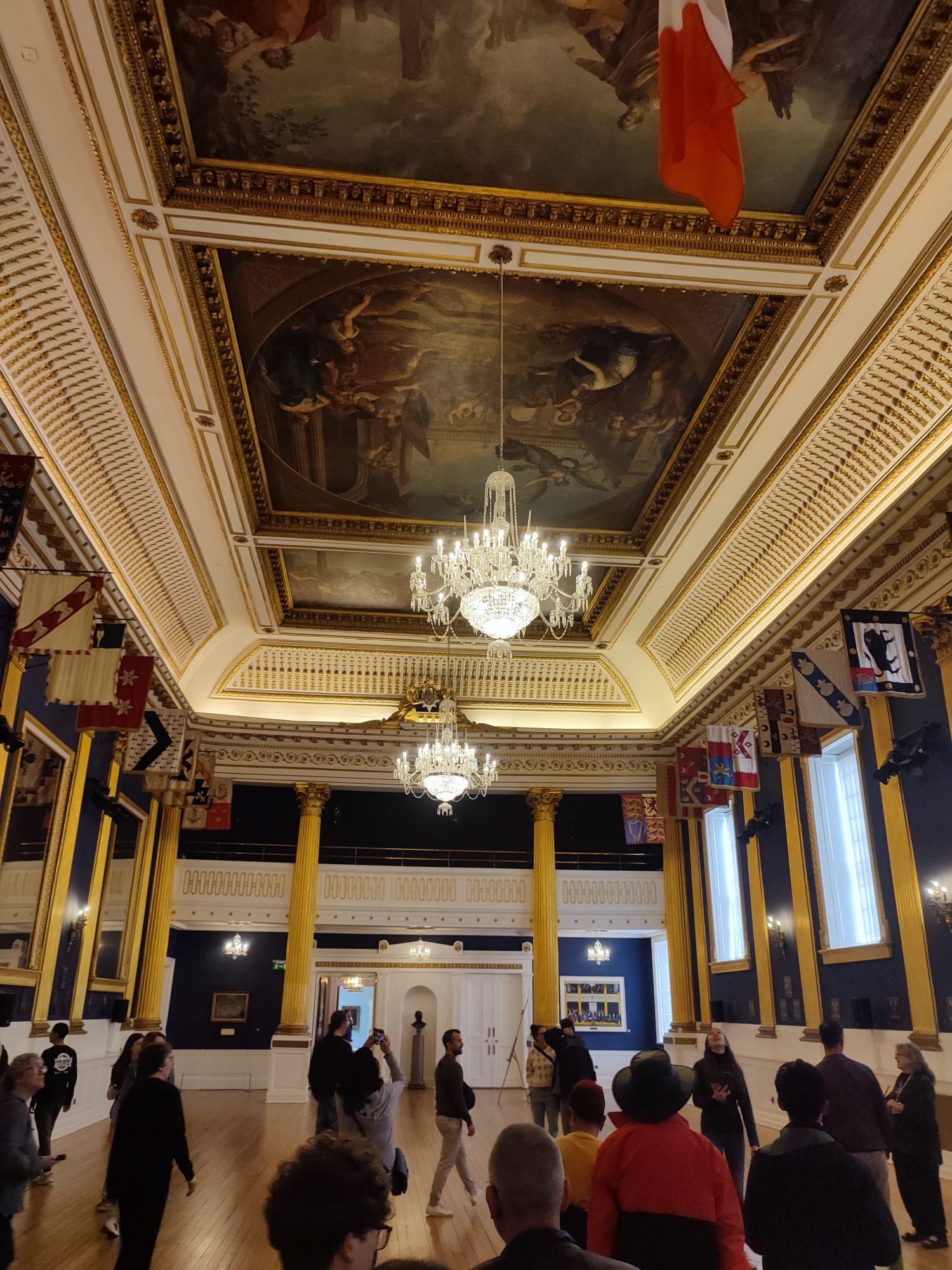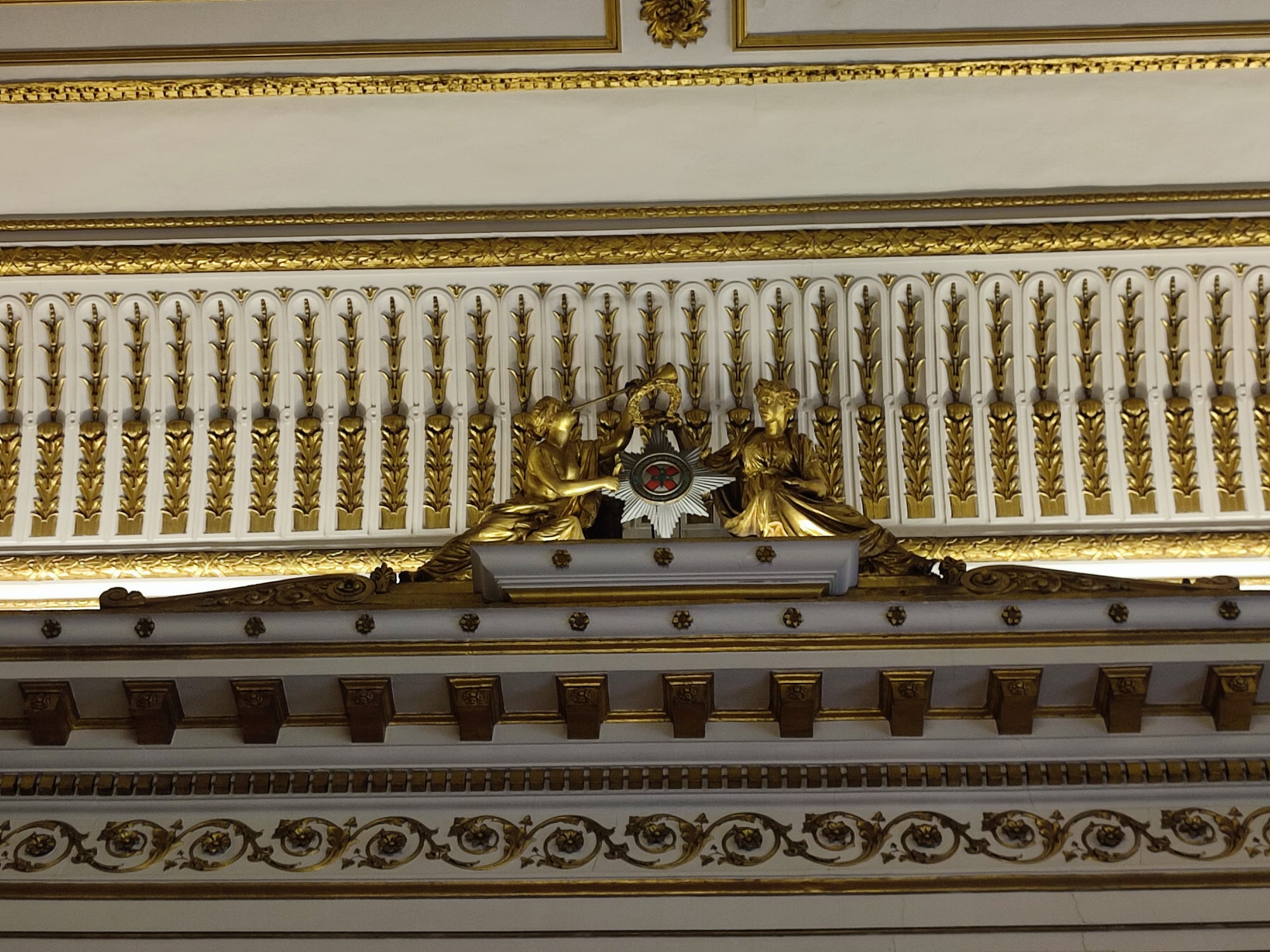Currently Empty: €0.00
Our guided tour visit to Dublin Castle turned out to be a very interesting experience. We had the opportunity to visit this beautiful example of irish architecture and cultural heritage that reflects the country’s history.
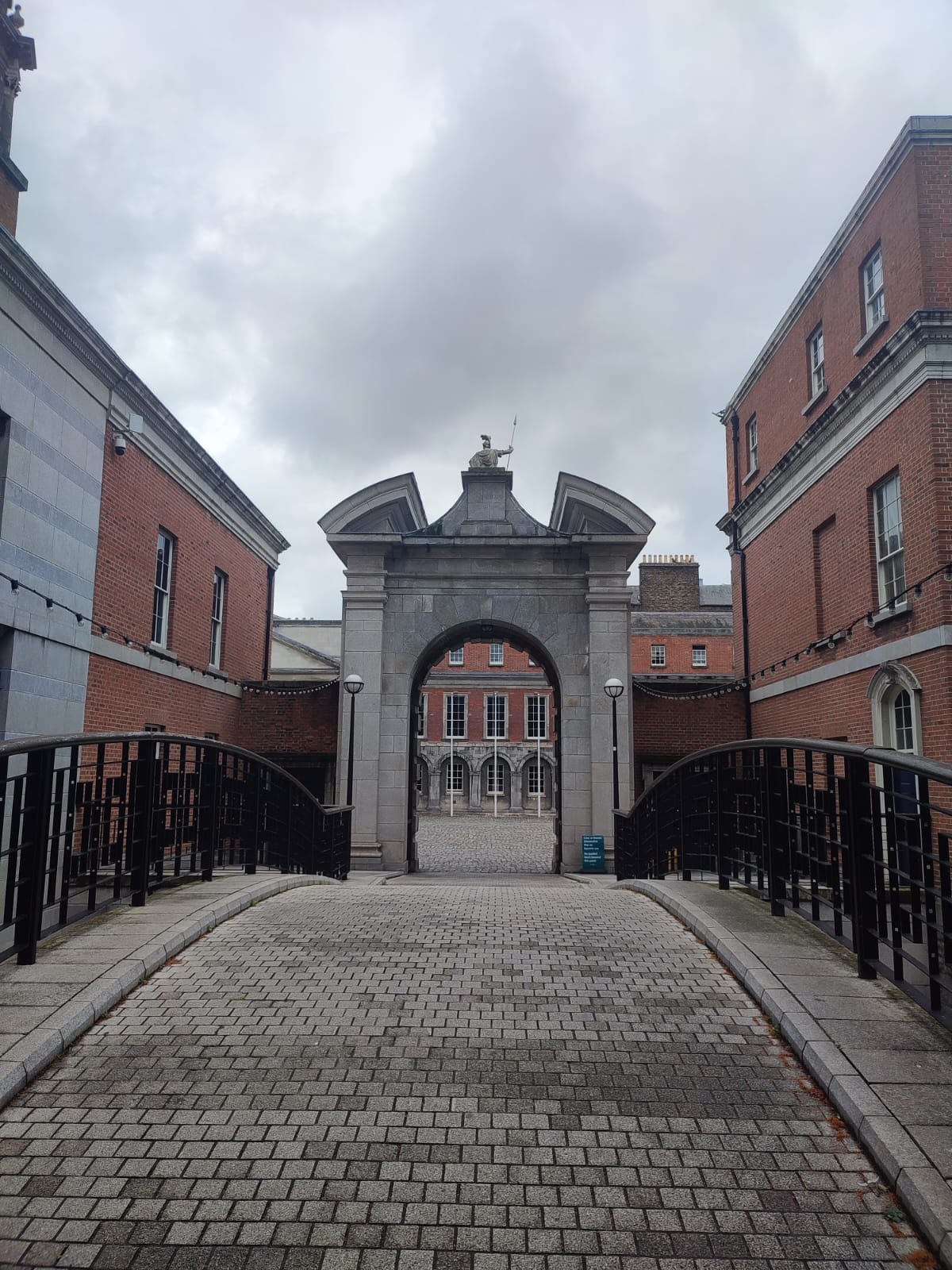
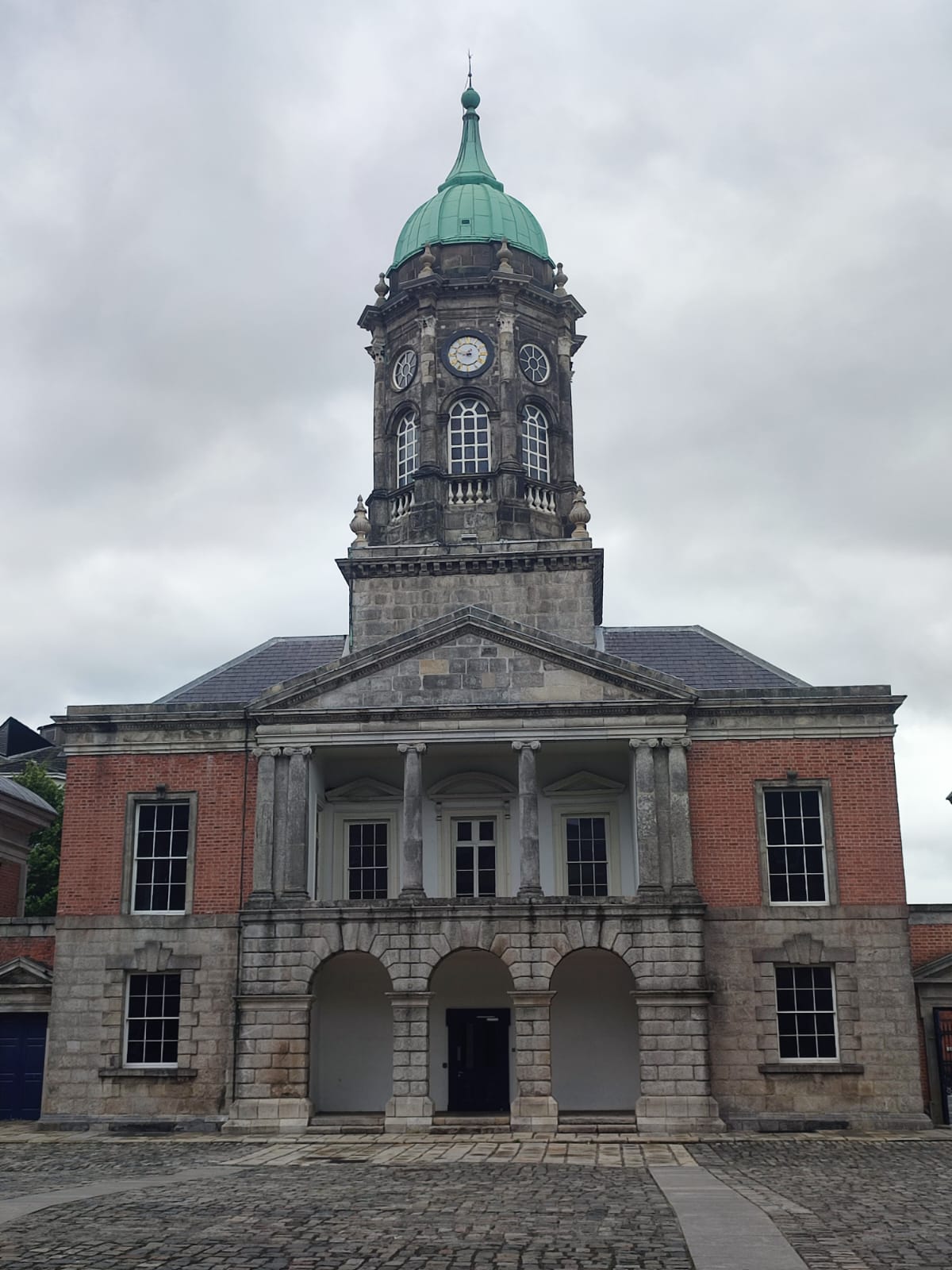
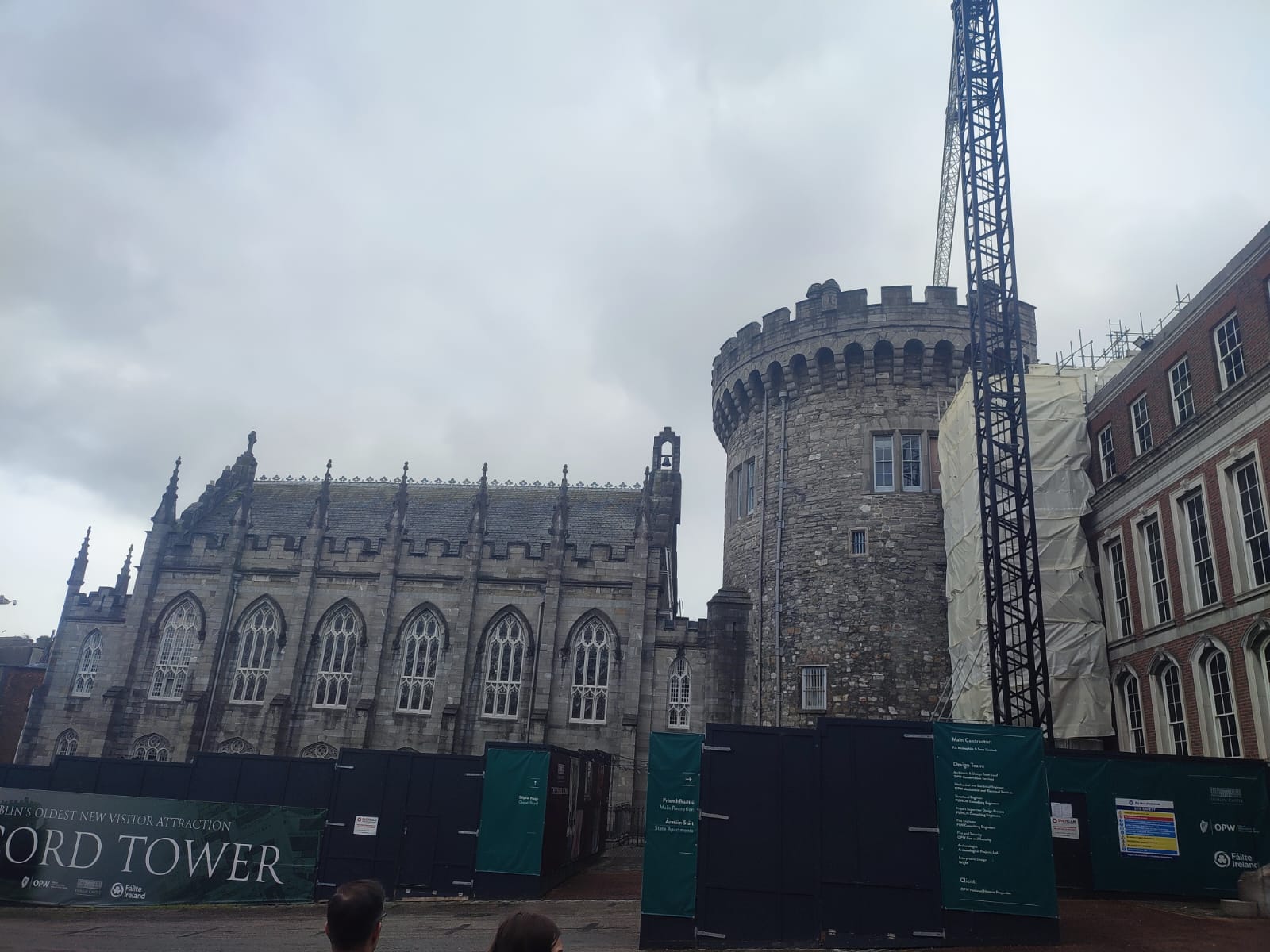
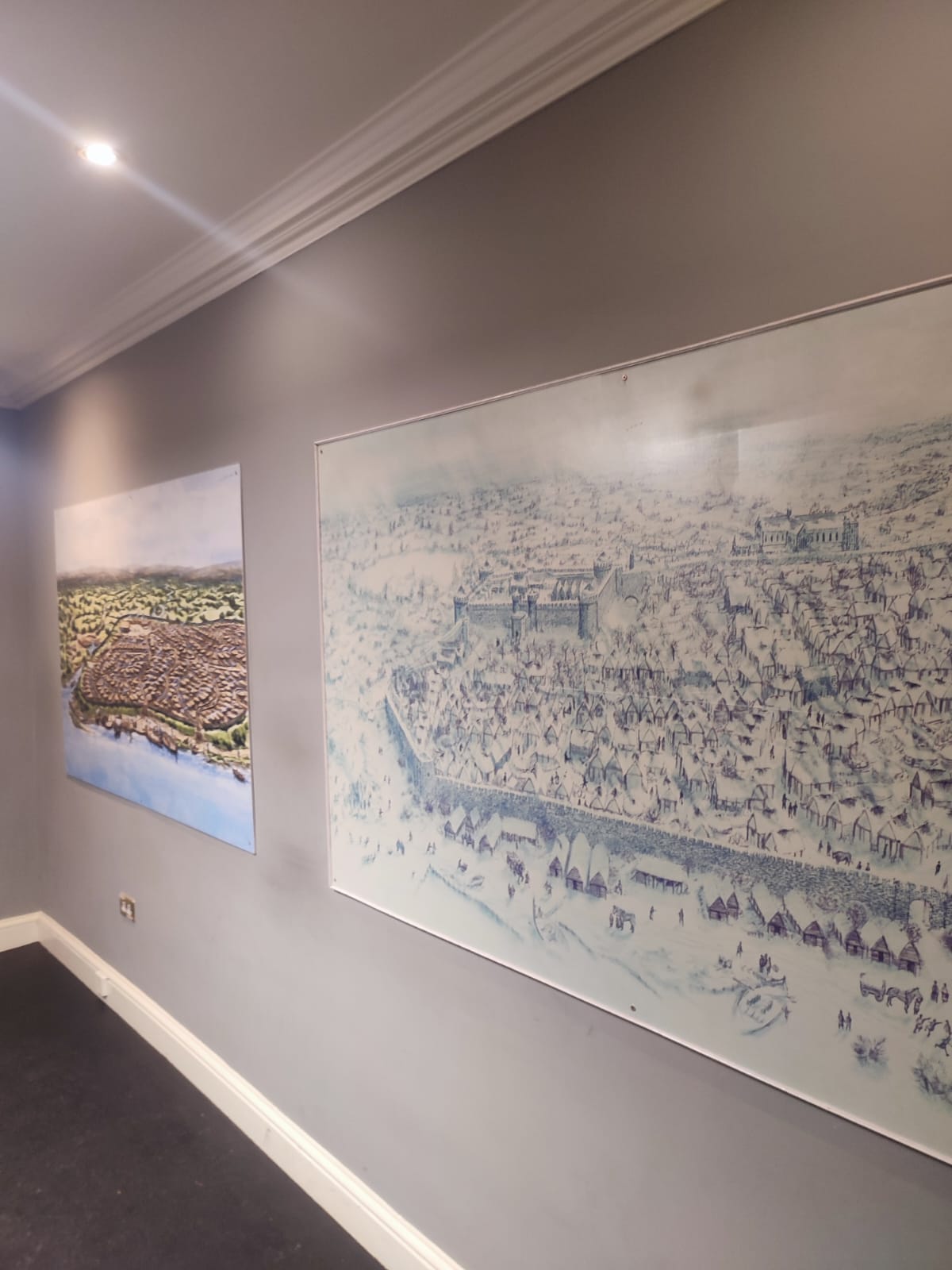
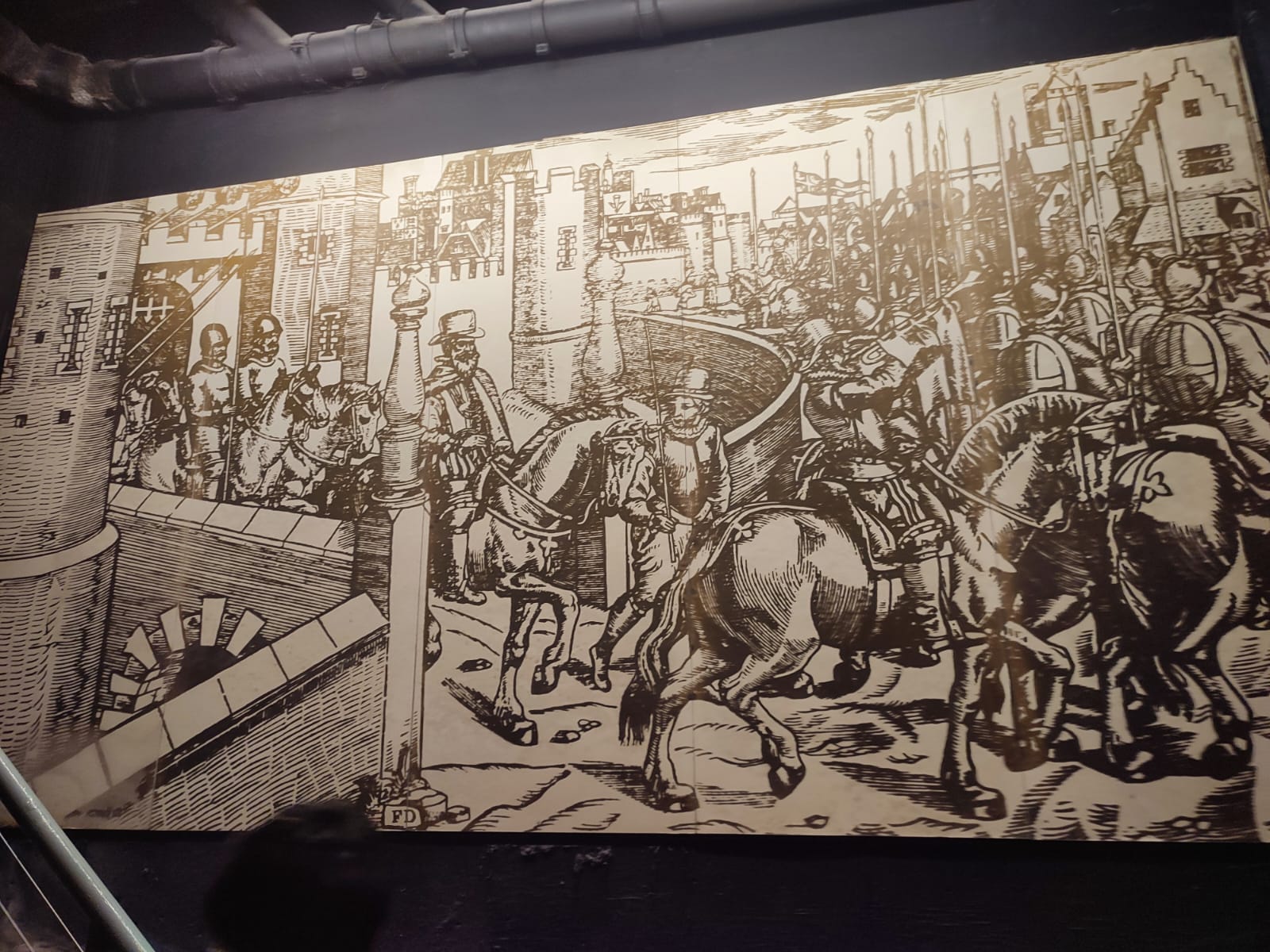
In more or less than one hour our guide took us through three main areas: the underground Viking ruins, the stunning Chapel Royal and the grand State Apartments. Each space revealed a different chapter of Dublin’s past, from its medieval origins to the rise of the modern Republic.
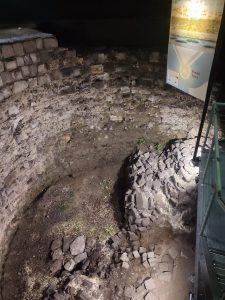 We started the tour by going underground, beneath the castle courtyard, where the original medieval foundations still remain. In a cool, damp, and dimly lit chamber, we stood next to the ancient city walls and the base of the old Powder Tower, once part of the original Norman fortifications. Our guide pointed the water coming out of the River Poddle, which still flows quietly beneath the city (it once played an important defensive and practical role). Standing on those very stones, imagining the early rulers of Dublin and life inside the fortress, was a fascinating and atmospheric experience. Unfortunately, around the 1600s the castle was blown up by accident during a fire that destroyed the original structure due to a large amount of gunpowder stored in the tower itself.
We started the tour by going underground, beneath the castle courtyard, where the original medieval foundations still remain. In a cool, damp, and dimly lit chamber, we stood next to the ancient city walls and the base of the old Powder Tower, once part of the original Norman fortifications. Our guide pointed the water coming out of the River Poddle, which still flows quietly beneath the city (it once played an important defensive and practical role). Standing on those very stones, imagining the early rulers of Dublin and life inside the fortress, was a fascinating and atmospheric experience. Unfortunately, around the 1600s the castle was blown up by accident during a fire that destroyed the original structure due to a large amount of gunpowder stored in the tower itself.
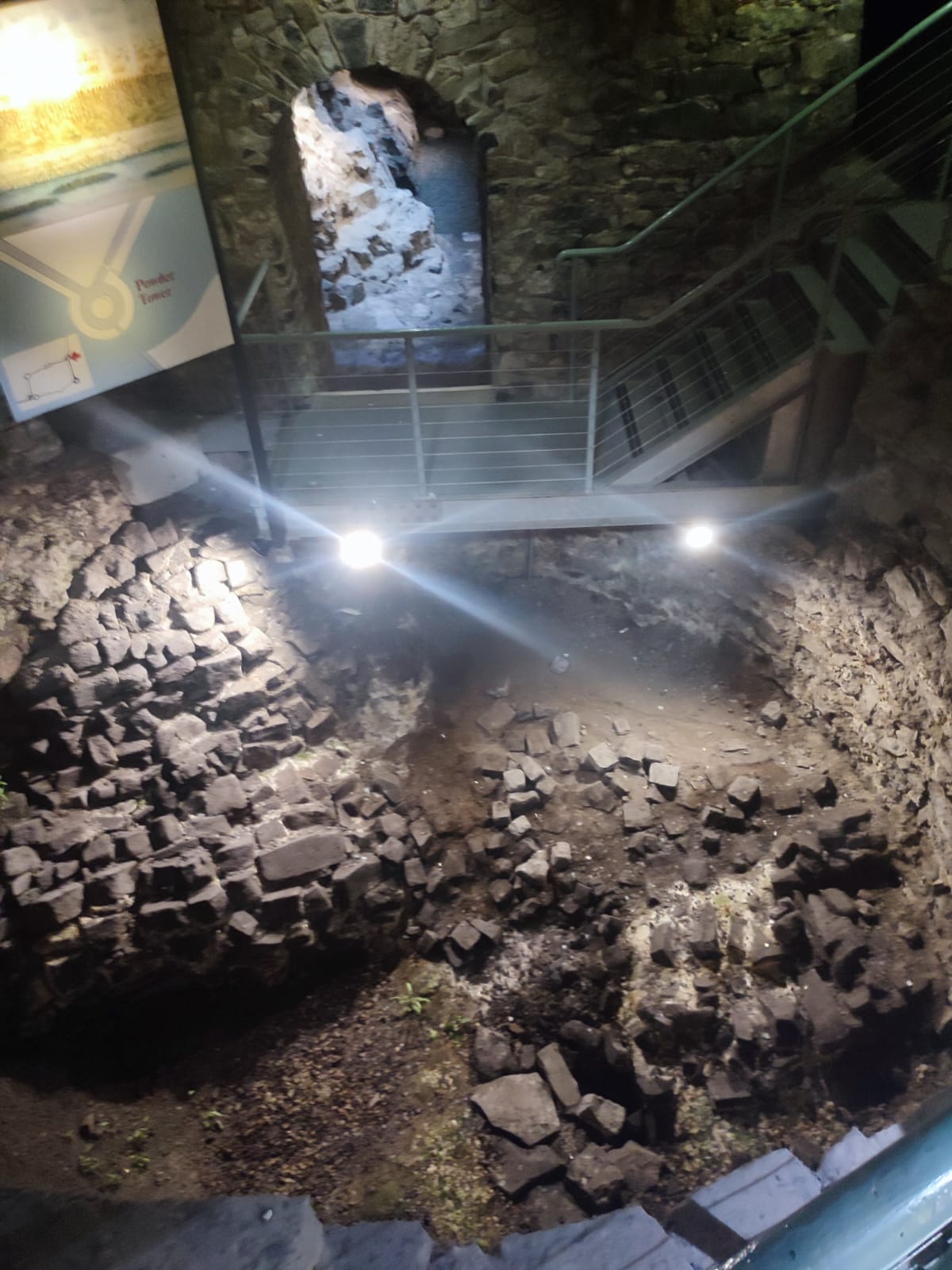
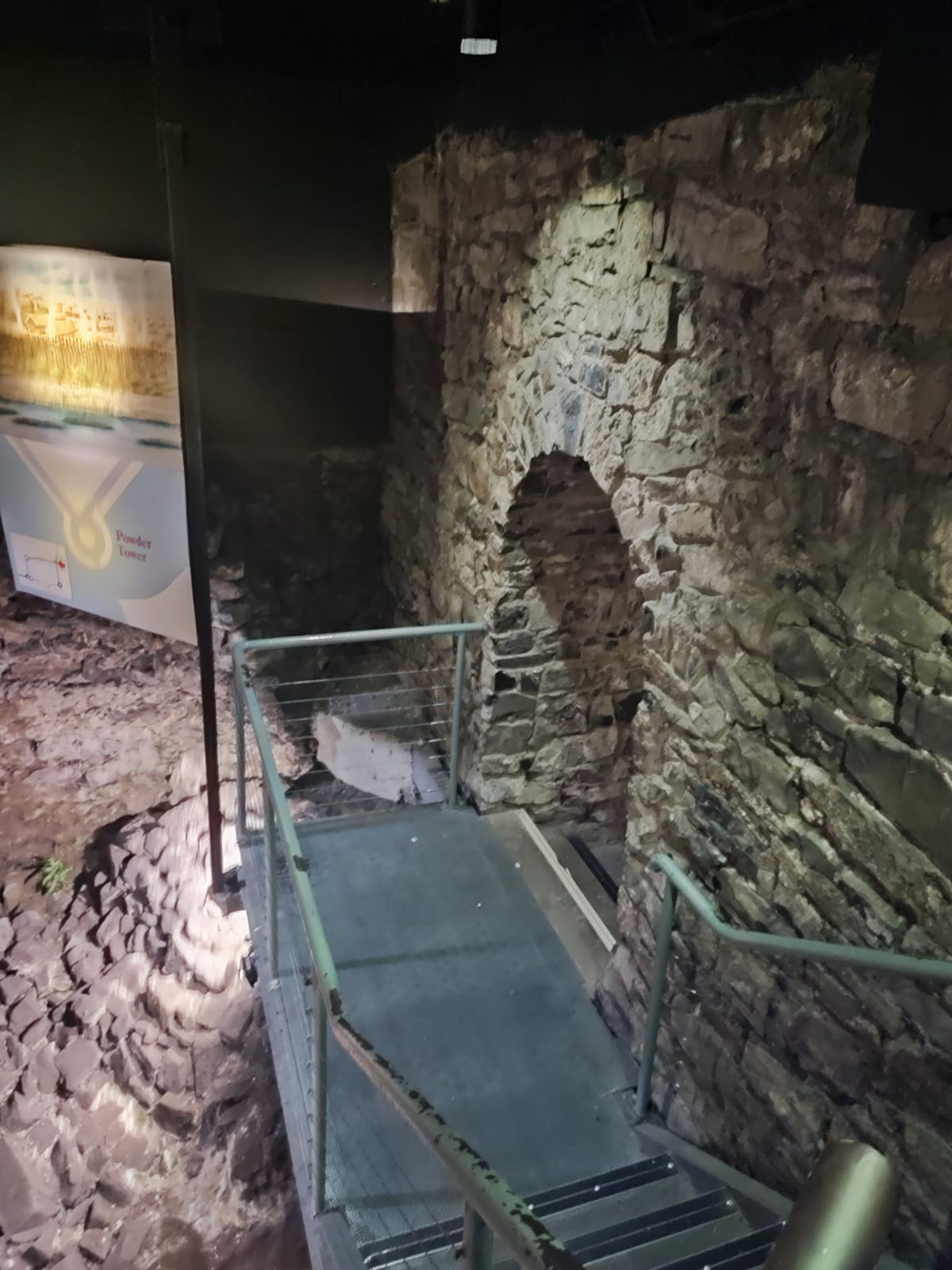
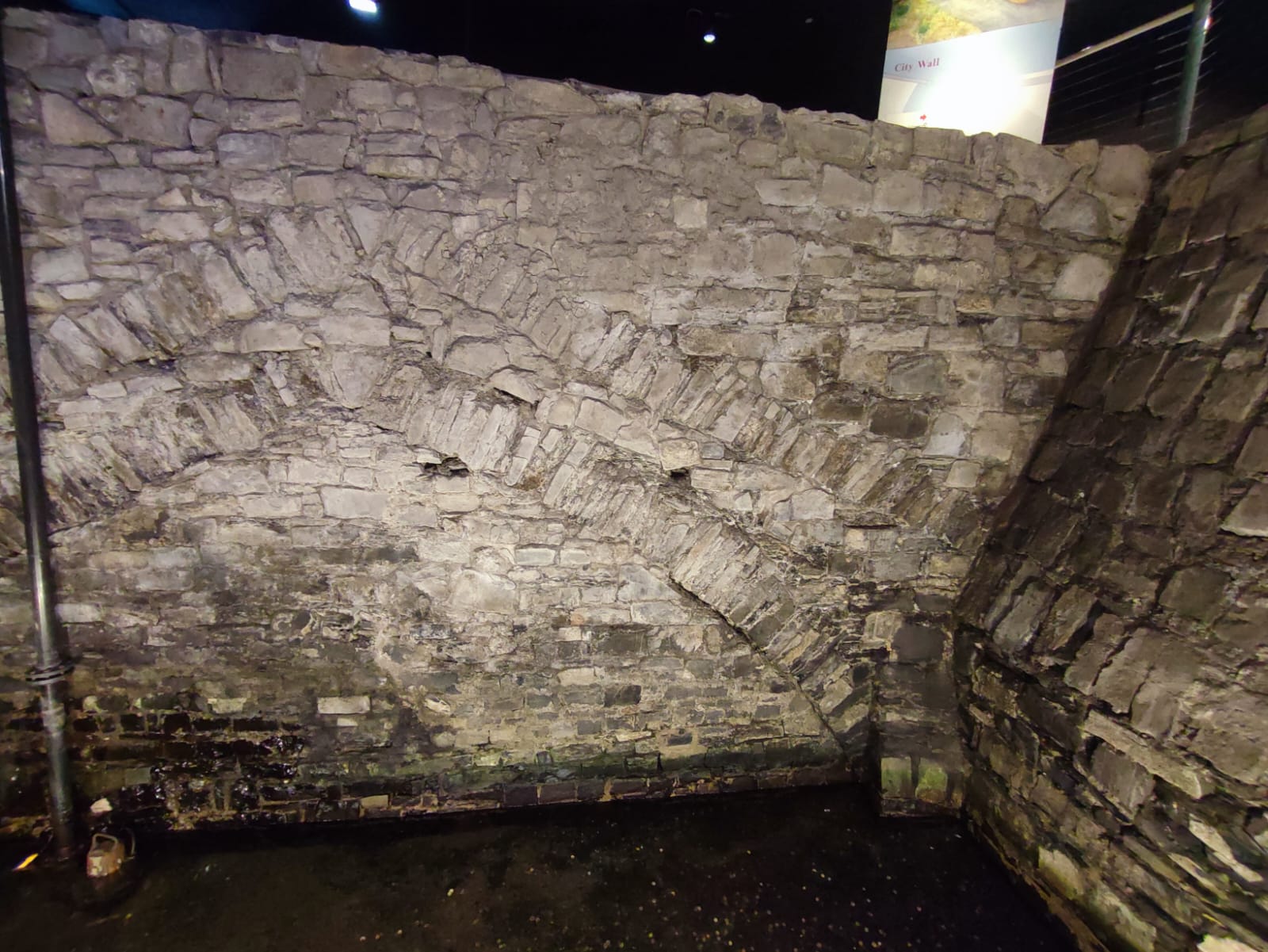
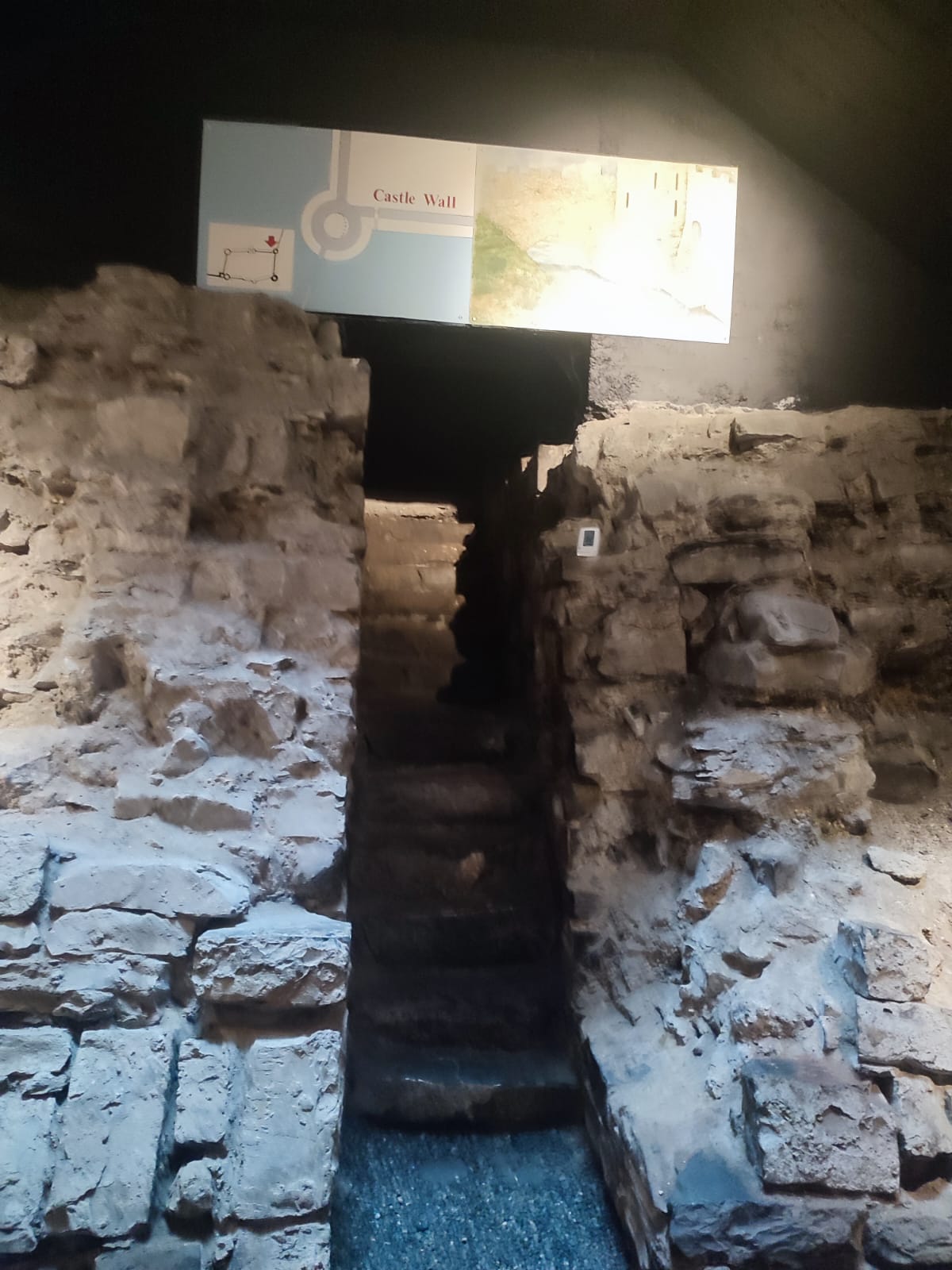
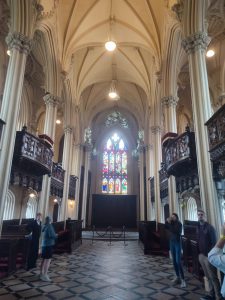 From the shadows below, we moved into the light-filled Chapel Royal, completed in 1814 in Gothic Revival style. This church was first an anglican church for the viceroy and than, during the second world war became a catholic church for the soldiers standing nearby. Today it’s deconsacrated but even if modest in size, the interior is full of beautiful ornate detail remaining from the original construction: fan-vaulted ceilings, finely carved wooden galleries, and beautiful stained glass windows that fill the space with color. The day we visited the site wasn’t very bright so we couldn’t appreciate fully the magnificence of the light. Near the top of the walls, we saw painted shields representing former Lords Lieutenant of Ireland, symbols of British rule.
From the shadows below, we moved into the light-filled Chapel Royal, completed in 1814 in Gothic Revival style. This church was first an anglican church for the viceroy and than, during the second world war became a catholic church for the soldiers standing nearby. Today it’s deconsacrated but even if modest in size, the interior is full of beautiful ornate detail remaining from the original construction: fan-vaulted ceilings, finely carved wooden galleries, and beautiful stained glass windows that fill the space with color. The day we visited the site wasn’t very bright so we couldn’t appreciate fully the magnificence of the light. Near the top of the walls, we saw painted shields representing former Lords Lieutenant of Ireland, symbols of British rule.
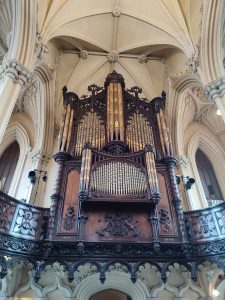 One of the most intriguing features was the pipe organ, positioned above the nave in the gallery, just on top of the main entrance. Sadly it’s no longer functional, due to the fact that some parts were removed to help restore another instrument but it’s still a wonderful sight. It’s a particular instrument also because its pipes are painted in rich tones that match the chapel’s decor, which is very rare for this kind of instrument. The three shields on the organ simbolize England, Scotland and Ireland unified into Great Britain and it was a way to repress the separatist movements in the nation.
One of the most intriguing features was the pipe organ, positioned above the nave in the gallery, just on top of the main entrance. Sadly it’s no longer functional, due to the fact that some parts were removed to help restore another instrument but it’s still a wonderful sight. It’s a particular instrument also because its pipes are painted in rich tones that match the chapel’s decor, which is very rare for this kind of instrument. The three shields on the organ simbolize England, Scotland and Ireland unified into Great Britain and it was a way to repress the separatist movements in the nation.

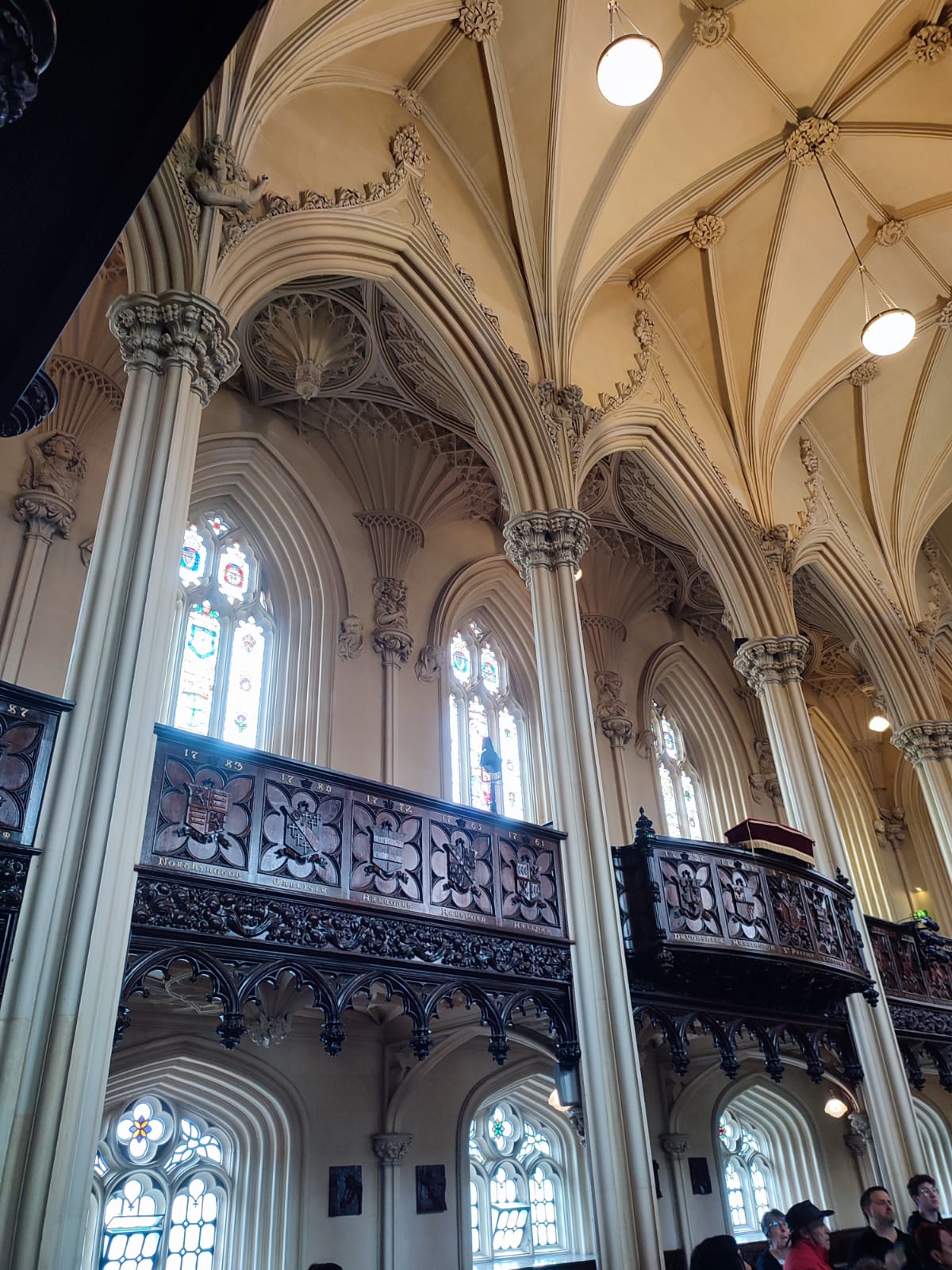
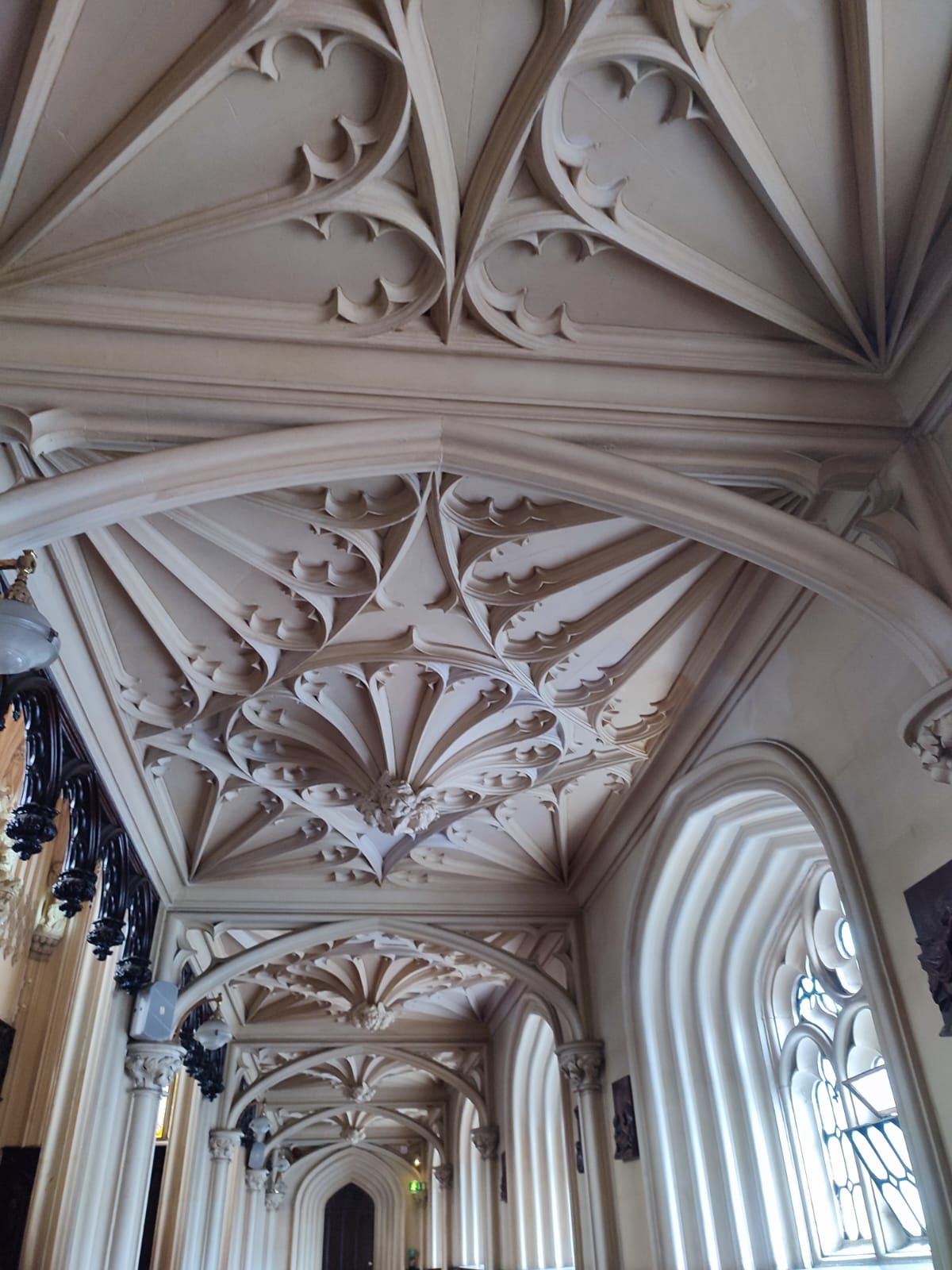
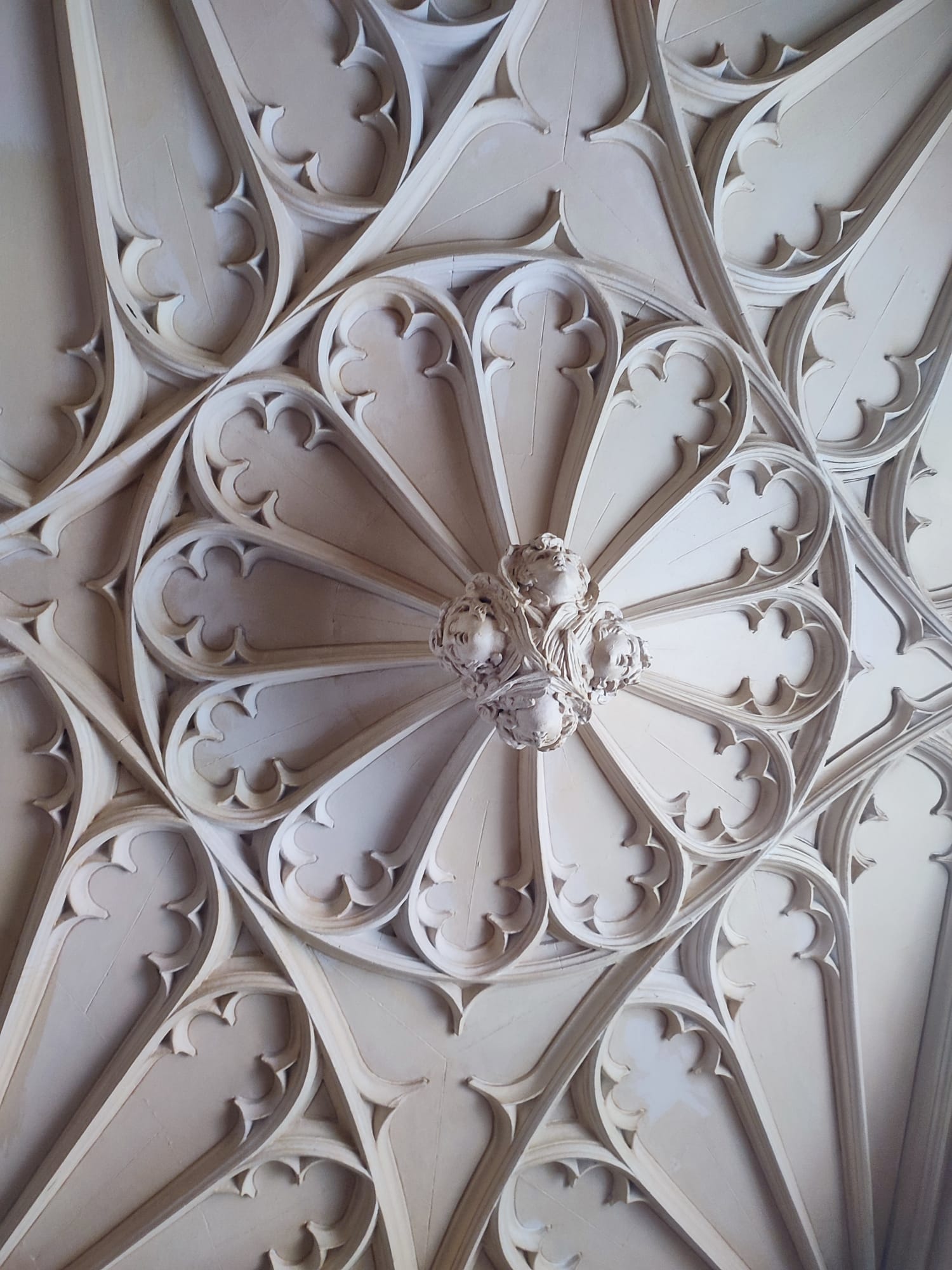
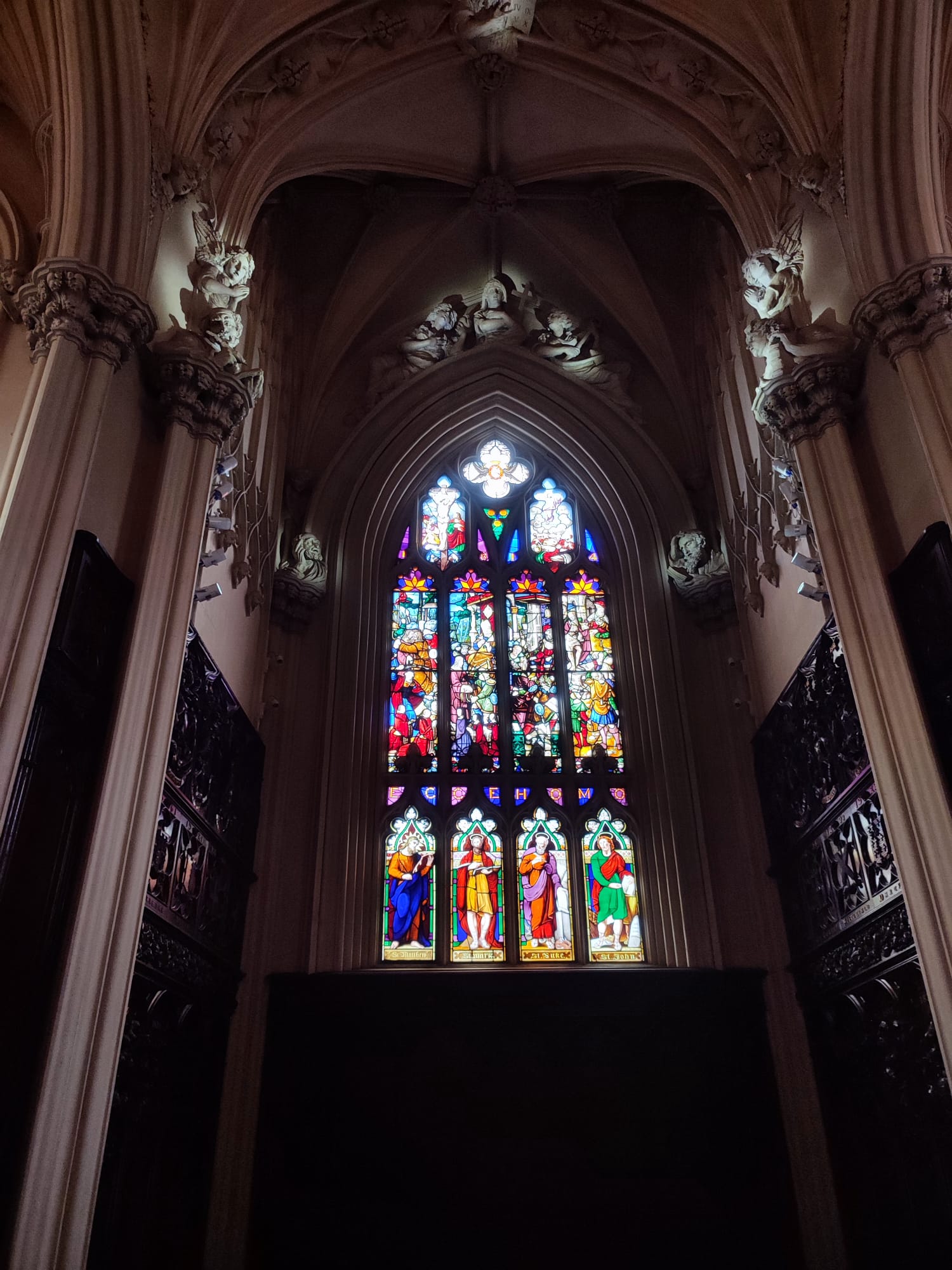
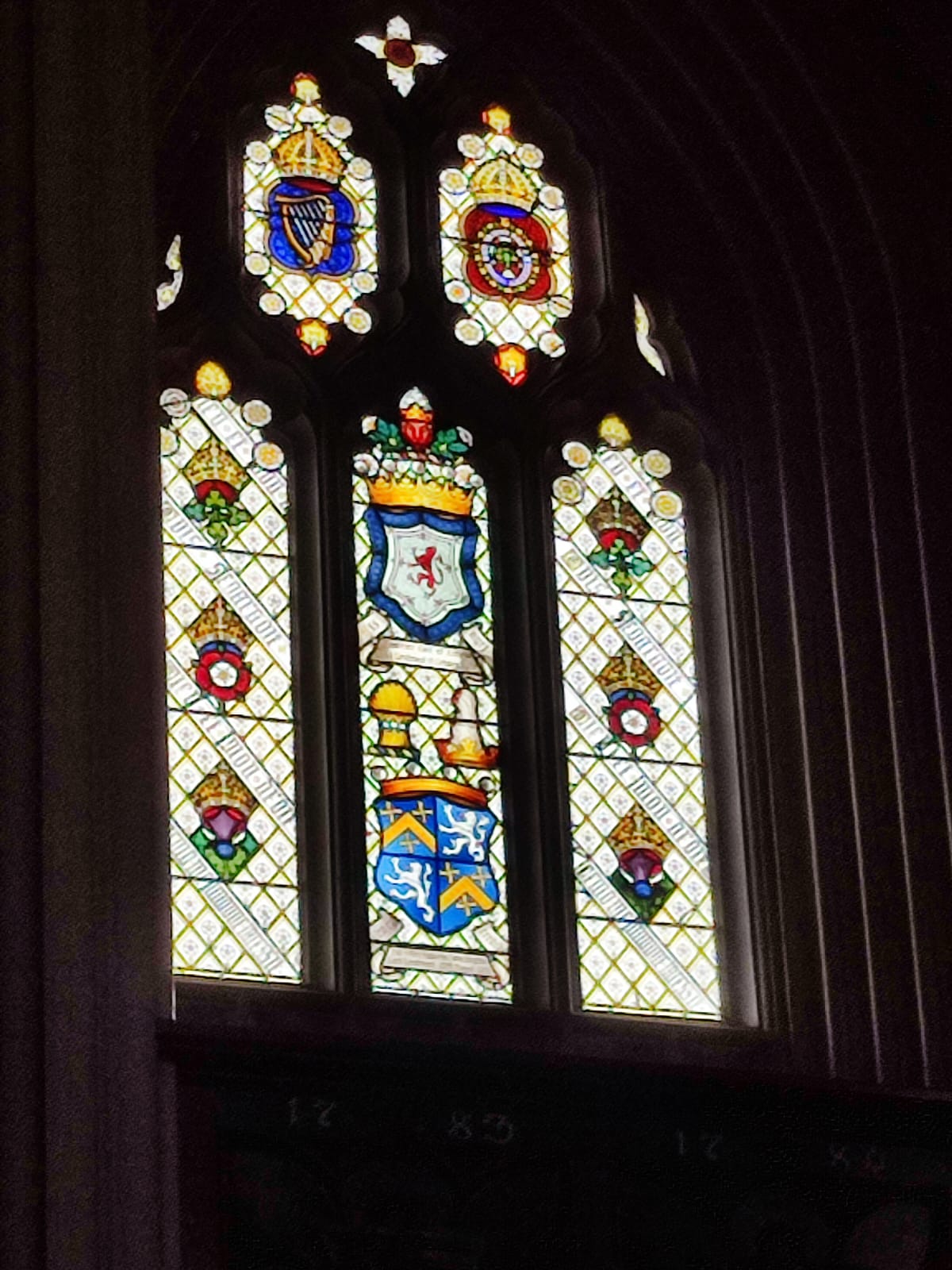
Our tour continued on the third and final part: the State Apartments, the most elegant and ceremonial area of the Castle. These rooms were once used by the British administration for royal visits and official governance and today, they are owned by the Irish state which uses them for high-level ceremonies, as for the example during the visit of queen Elizabeth the second.
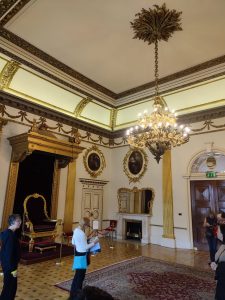
We walked through drawing rooms, the Throne Room, and the impressive St. Patrick’s Hall. The Throne Room still holds the original chair made for King George IV’s visit in 1821, surrounded by wood paneling and furniture of the time. But the true highlight was St. Patrick’s Hall: a grand ceremonial chamber that now hosts the inauguration of Irish presidents. With
its coffered ceiling, huge historical paintings, and deep blue and gold color palette, the room is breathtaking. The ceiling paintings, from the 1780s, depict myths and early episodes of Irish history as the St. Patrick’s myth, turning the room into a vivid visual celebration of national heritage.
The visit was really interesting and beautiful as we found out how a space once designed to represent colonial authority has now become the symbolic heart of the Irish Republic were every new president needs to take a speech after the election.
Our guide made the experience truly special, sharing great stories and insightful commentary on the architecture, historical transitions, and political significance of each space. From Viking outpost to British power base to a functioning center of Irish statehood, the Castle each part offers a unique window into Ireland’s complex and layered history.
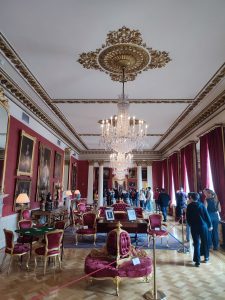
If you’re visiting Dublin, the guided tour of Dublin Castle is absolutely worth it so we strongly recommend booking in advance, especially during busy times of year, as group sizes are limited and having a knowledgeable guide really enhances the experience as you are able to visit places that the self-guided tour doesn’t allow you to visit, as for example the undergrounds and the royal chapel. Overall we really think that going to visit this place is a key passage to understanding the city of Dublin and its culture.
